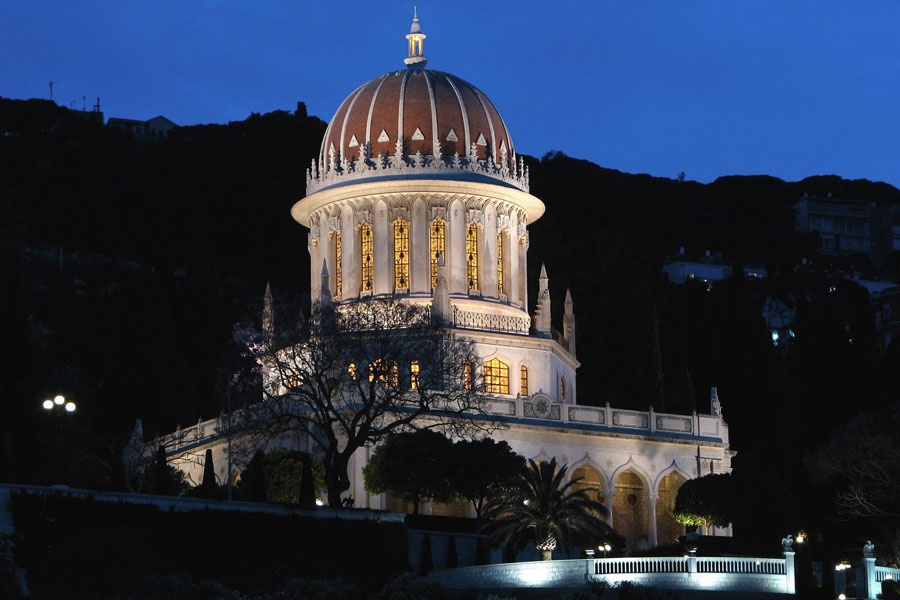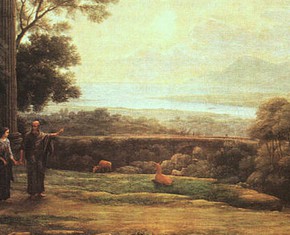The views expressed in our content reflect individual perspectives and do not represent the authoritative views of the Baha'i Faith.
Can a garden teach us spiritual truths?
Based on my experiences in the Baha’i gardens in the Holy Land, I would say, definitely yes!
The holy places of the Baha’i Faith in northern Israel include a number of high-profile locations known for the magnificence and grandeur of their design: the Shrine of the Bab, the nineteen terraces scaling the full height of Mt. Carmel in Haifa, the Seat of the Universal House of Justice, and the Shrine of Baha’u’llah in Akka, with gardens radiating in all directions. Millions of people around the world have seen these gorgeous gardens. They contain a deep spiritual meaning, and inspire awe in even casual observers.
But tucked away, at the bottom of Mt. Carmel, in the shadow of three pre-existing buildings, is a modest garden that’s easily overlooked by visitors, pilgrims, and passers-by. A small circle of cypress trees with a foot-path around them marks the spot where Baha’u’llah set up camp when he and his son Abdu’l-Baha visited the mountain late in his life. This might seem like an odd reason to build a garden—after all, it’s just a campsite. But after a lot of meditation, much of which took place in that same garden, I came to the conclusion a few years ago that this unassuming monument vividly illustrates the spiritual and artistic vision that inspired the development of all the Baha’i holy places in the area.
It has to do with the empty circle between the trees that centers the whole space.
All the Baha’i holy places were designed, not only to be beautiful, but to instill into those who visit a desire to understand the space’s spiritual significance. This is especially the case around the Holy Shrines, where the remains of the Bab, Baha’u’llah, and Abdu’l-Baha were laid to rest. In the small garden I mentioned, though, the empty circle represents the place for the prophet of God, symbolizing a spiritual truth and serving as a reminder of a historical fact.

Shrine of the Bab and Abdu’l-Baha
That empty circle makes a statement about the site’s importance: The lamp of God’s revelation slept on this ground. That silent statement presumes a body of knowledge about Baha’u’llah, the person who slept there: and what it means to be a prophet of God. More than just the inspired teachers that established the world religions—Muhammad, Jesus, the Buddha, and others—they are living connections between God and human society:
And since there can be no tie of direct intercourse to bind the one true God with His creation, and no resemblance whatever can exist between the transient and the Eternal, the contingent and the Absolute, He hath ordained that in every age and dispensation a pure and stainless Soul be made manifest in the kingdoms of earth and heaven. Unto this subtle, this mysterious and ethereal Being He hath assigned a twofold nature; the physical, pertaining to the world of matter, and the spiritual, which is born of the substance of God Himself. – Baha’u’llah, Gleanings from the Writings of Baha’u’llah, p. 66.
The spiritual nature of a prophet of God, as Baha’u’llah suggests, signifies the mind and action of God Himself. But the physical nature is the same human form shared in common with you and me. The prophets were all definite human beings who lived in a specific time and place. In Baha’u’llah’s case, the physical form is a Persian, born in 1819, who after a series of exiles spent the last years of his life in a region that is now part of Israel, and who on more than one occasion camped at the foot of Mt. Carmel.
Looked at through the lens of the Baha’i teachings, this garden draws the occupant into an awareness that God, who exists beyond all human comprehension, allowed us a special glimpse at his eternal beauty through the soul of a human being who ate, drank, walked, and slept.
We all share the same physical form as the prophets of God. That bare patch of ground encircled by cypress trees bore the weight of God’s human vessel. The humility of that bare patch of ground speaks to the ordinariness of the people standing outside the ring of cypress trees, and reveals to them the spiritual glory their souls can reflect.
The circle has a center, the space of God’s prophet, and a perimeter, the space of God’s humble worshipper. This thematic relation of center to perimeter, God to creation, pervades all the Baha’i gardens in the Holy Land.
Don’t let the gorgeous views deceive you! These gardens teach a profound lesson in spirituality written out in stones, trees, shrubs, shrines, sculpture, and flowers.
You May Also Like
Comments

















One can continue on a spiritual journey, without the unnecessary weight of Divine baggages
(See peace-loving, godless Scandinavia)